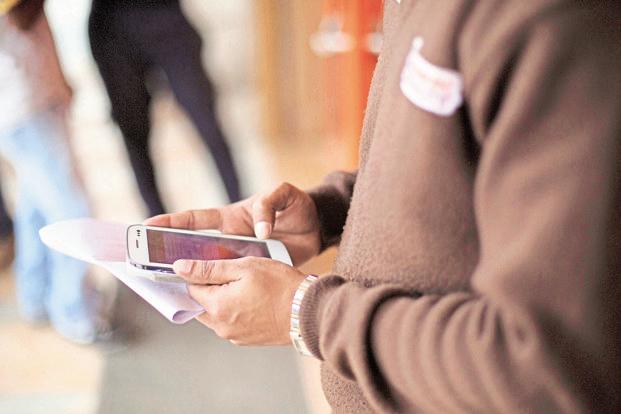By Harveen Ahluwalia
Mint, New Delhi
WWR Article Summary (tl;dr) This article takes an interesting look at how several news organizations in India are using facebook live instead of traditional news crews to expand election coverage.
NEW DELHI
In the wake of ongoing assembly polls, online media companies across the country have gone hyperlocal in their election coverage on digital and social media platforms in a bid to attract younger audiences.
Giving up television cameras and broadcast vans, the companies have taken to mobile phone cameras to cover the elections at a local level.
India Today group-owned Hindi news website The Lallantop.com recently announced an exclusive partnership with social media platform Facebook to cover Uttar Pradesh assembly elections from 72 districts using Facebook Live–a feature that enables users to interact with the viewers in real time through live videos. These videos are shared on Facebook India page as well.
Quintillion Media Pvt. Ltd-owned news website thequint.com has also taken a similar approach. The company in partnership with journalist Barkha Dutt launched the show On The Road with Barkha to cover UP polls and bring out ‘extensive ground reports’ using mobile phone cameras.
Industry executives said that idea is to go where television channels are not going, to change the election narrative from ‘dry candidate statements to humane and emotional stories’ and to attract younger audiences which are consuming maximum content online.
“The ‘Facebook’ generation of audiences is consuming very local content. Election coverage by news channels has to take into account national interest and they can’t become hyperlocal. With The Lallantop.com, the narrative has changed. There are no cameras, just Facebook live videos,” said Kallie Purie, group editorial director, broadcast and new media, India Today Group.
For instance, The Lallantop.com is conducting on-ground events in different cities namely Bareilly, Lucknow, Gorakhpur and Varanasi which include talk shows on political stories, importance of voting and people manifesto among other things. Apart from that, the election team of the company is posting at least three live videos on Facebook every day–interviewing people and conducting quiz contests and competitions to engage audiences.
Karnika Kohli, social media editor at digital news start-up The Wire, agreed that the companies are trying to change the election narrative. “Instead of just focusing on what the candidates have to say, we wanted to get an idea of what the aam janta (common people) feels. We interviewed many individuals across states–some live on Facebook, some were recorded on videos and some text interviews. We switched to smart phones because people are intimidated by cameras,” said Kohli.
The Wire recently launched a Hindi news website in addition to its English one and also brought on board journalist Vinod Dua for the venture. “To tap into the Hindi belt (tier 2 & 3 cities), we did a video series in Hindi called Chunavi Charcha where our journalists went to different parts of UP and talked to dalit farmers, women, Muslims who have been displaced after the Muzaffarnagar riots,” Kohli added.
According to Purie and Kohli, the companies have received ‘phenomenal’ response on social media and digital media platforms for their coverage. While The Lallantop.com observed a 130% increase in traffic from areas where its events are happening (driven by Facebook Live videos), Kohli said that The Wire has been clocking 15,000 to 30,000 views on an average on its videos.
However, not everyone is convinced about the success of Facebook Live videos. “Everyone including Scroll is experimenting with FB live. The format is too new to pin point any great success as yet. If you look at the numbers on most FB live sessions, they are small compared to those for non-live videos. Our networks and connections are still a challenge,” said Samir Patil, founder and chief executive at the news site Scroll.
Besides advertising remains a hard nut to crack. “There has been a lot of interest from brands but advertising has not come through yet. Advertisers are slow to realize that a bulk of the audience is on the mobile phone–which remains our core audience. They are catching up to the fact,” said Ritu Kapur, co-founder and chief executive officer at Quintillion Media.
Anita Nayyar, chief executive officer of Havas Media Group, India and South Asia, explained that advertisers and marketers have not been able to optimize the full potential of mobile because of broadband and connectivity issues. “With data becoming cheaper with Reliance Jio, we will be getting last mile connectivity. It will take few months to realize the true potential of mobile phones,” she said.
Five states including Uttarakhand, Goa, Punjab, Manipur and Uttar Pradesh have gone to polls between February and March.
Currently, Uttar Pradesh is going through a seven-phase voting between 11 February and 8 March. Goa, Punjab and Uttarakhand have already voted.
Manipur will hold elections in two phases on 4 and 8 March.














































































































































































































































































































































































